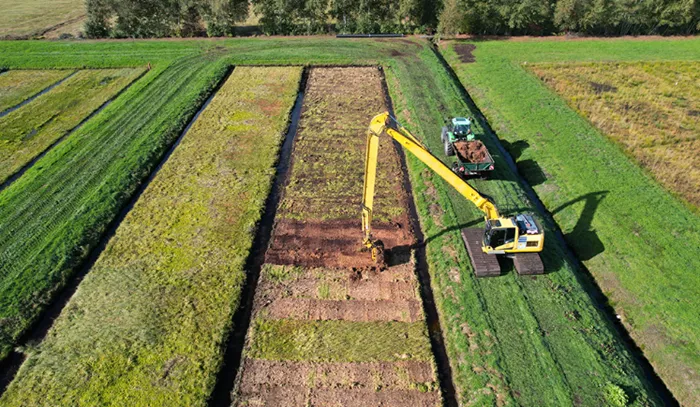Conservationists Push to Restore Wetlands in the Netherlands.
In the Netherlands, approximately 77% of wetlands have been lost or degraded. Conservationists are now advocating for efforts to rewet these vital ecosystems. Wetlands, including swamps, peatlands, and marshes, play a crucial role in purifying water, reducing flooding and drought, trapping greenhouse gases, and supporting diverse plant and animal life.
However, restoring drained wetlands is not as straightforward as simply adding water.
Researchers at Radboud University have proposed a new method to help return these areas to their original wetland state. This approach involves replanting specific native plant species, which can aid in the transition from a dry ecosystem back to a wetland. Importantly, these plants also have economic value, which may encourage landowners to participate in restoration efforts.
Restoring Wetlands is Key for Climate Goals
Renske Vroom, who completed her Ph.D. at Radboud University in Nijmegen, has studied effective ways to restore wetlands. “We cannot achieve the goals of the Paris Agreement without rewetting peatlands, as they are significant sources of carbon dioxide emissions,” she explained.
When peatlands are drained, they release large amounts of stored carbon. In the European Union, about 50% of peatlands are currently drained. In the Netherlands alone, drained peatlands contribute to 5% of man-made greenhouse gas emissions, despite occupying just 0.3% of the land area, according to Vroom.
A major challenge in restoring agricultural wetlands is the presence of excess nutrients, often from artificial fertilizers. While these nutrients helped crops grow, they can cause water quality issues when wetlands are restored. They may lead to harmful algae blooms and allow a few plant species to dominate, hindering biodiversity and the proper functioning of the wetland.
To transition these lands back to their natural state, Vroom suggests that paludiculture—the practice of cultivating harvestable plants in wetland areas—can be effective.
Reviving Dried Wetlands Through Paludiculture
Paludiculture was first introduced in 1998 by Hans Joosten, a professor at the University of Greifswald. This method offers an alternative to draining peatlands for agriculture and has seen success in regions such as Southeast Asia, the Caribbean, and South America.
Research in Germany shows that paludiculture can enhance biodiversity compared to traditional drained farming methods. Hybrid approaches that combine paludiculture with fisheries are also being tested in Indonesia.
Vroom believes that paludiculture can play a crucial role in restoring wetlands by absorbing excess nutrients left behind after land was drained and farmed. Plant species like cattails and duckweed are particularly effective. When planted early in the rewetting process, these plants act as “sponges” to absorb excess nutrients, transforming them into economic products. For example, cattails can be used for insulation or as livestock feed. This process also allows time for the natural balance of plants and animals to recover.
The long-term health of these rewetted ecosystems is a primary focus for researchers like Vroom. While early efforts are promising, it remains uncertain whether biodiversity and ecosystem function will return to their original state.
“Many say that more research is needed, but growing evidence shows that these methods are effective,” Vroom stated. “The most important thing is that we restore wetlands.”
Given the significant greenhouse gas emissions from these small areas, Vroom is hopeful about the impact of rewetting on climate change initiatives. “You can achieve significant results with a relatively small amount of land restoration,” she noted. “That’s the positive aspect.”
Related topics:


